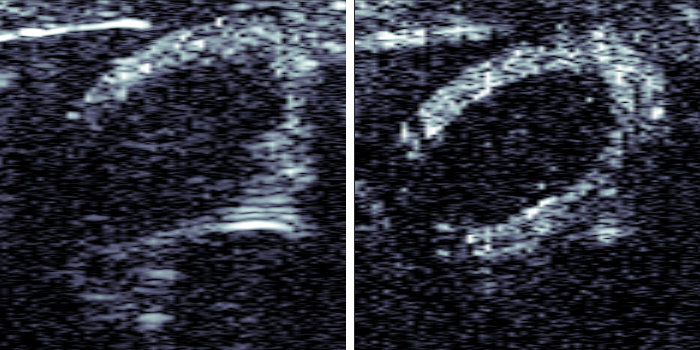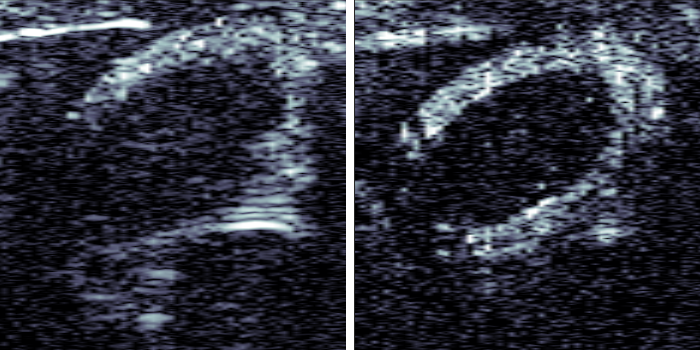Three Pulses for Clearer Ultrasound Images
To improve the quality of an ultrasound image, clinicians can inject tiny synthetic gas bubbles into a living organism. The bubbles produce strong ultrasound signals, increasing contrast and reducing artifacts in the image. In recent years, researchers have developed air-filled structures made of proteins called gas vesicles that serve the same purpose. The proteins are made directly by cells, potentially allowing researchers to trace the origin of an ultrasound signal to a specific cell or molecule in the tissue. But the vesicles can add artifacts to ultrasound images, leading to misinterpretations by researchers. Now, David Maresca of the California Institute of Technology, Pasadena, and colleagues have developed a technique for producing cleaner images using these vesicles.
The technique involves applying three ultrasound pulses in sequence. The first and second pulses are tilted slightly to the left or right, at opposite angles. They are linearly scattered by the organism and induce normal ultrasound contrast. The third pulse is a combination of the first two, so that its wave front appears X-shaped from above. This X pulse elicits a nonlinear scattering response from the vesicles but not from the rest of the organism, allowing their location to be determined. Artifacts are minimized when the X pulse is exactly the sum of the first two pulses. To test the technique, the team simulated and imaged several systems containing the air-filled proteins, including a tissue-mimicking material and a mouse gastrointestinal tract. Compared to conventional ultrasound techniques, the three-pulse sequence doubled the contrast in the image and reduced the number of image artifacts by a factor of 4. The team found that the larger the angle between the two pulses, the cleaner the image. They say that their technique could improve images for other ultrasound contrast agents, including the microbubbles currently used clinically.
This research is published in Physical Review X.
–Sophia Chen
Sophia Chen is a freelance science writer based in Tucson, Arizona.





